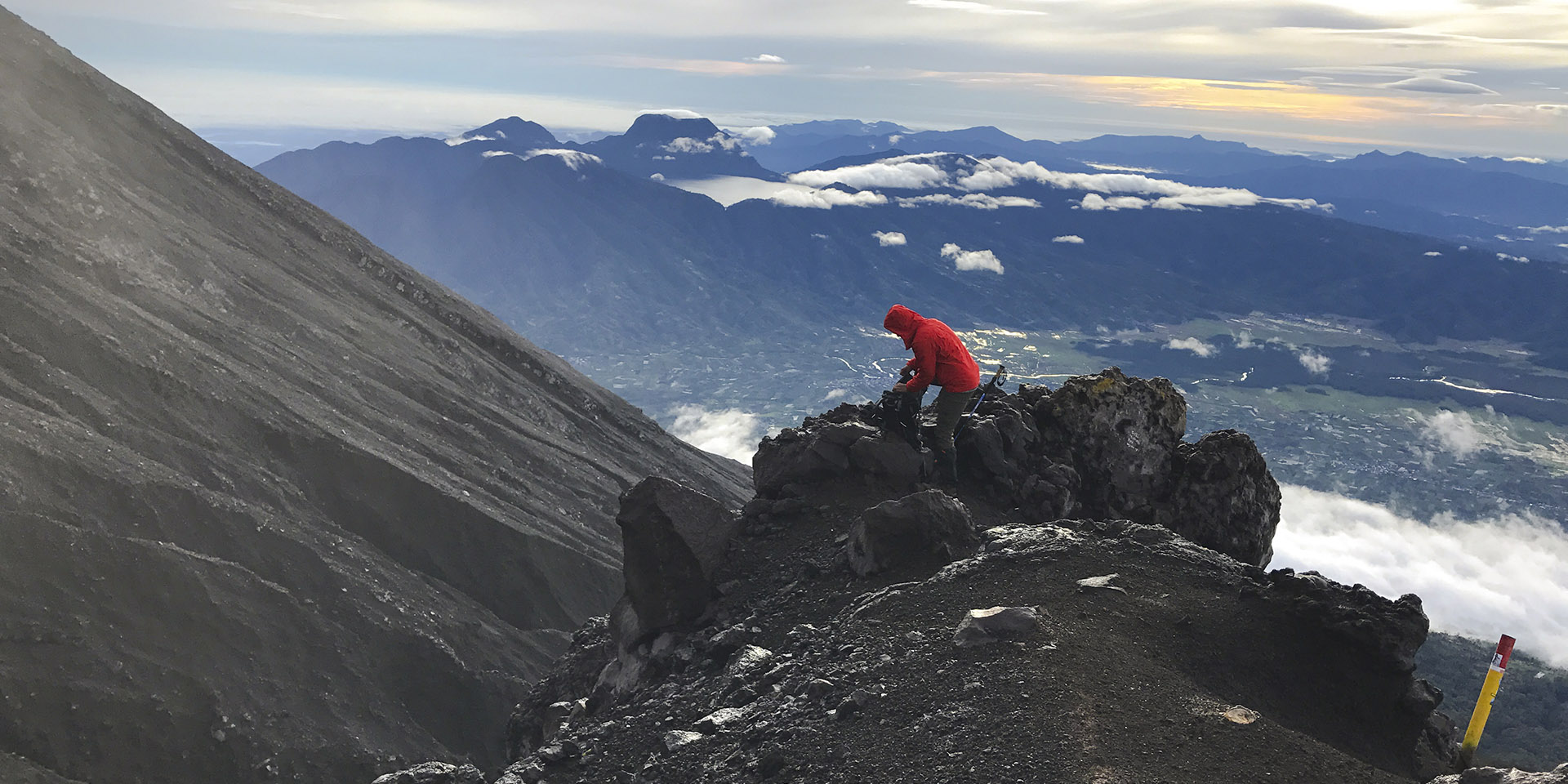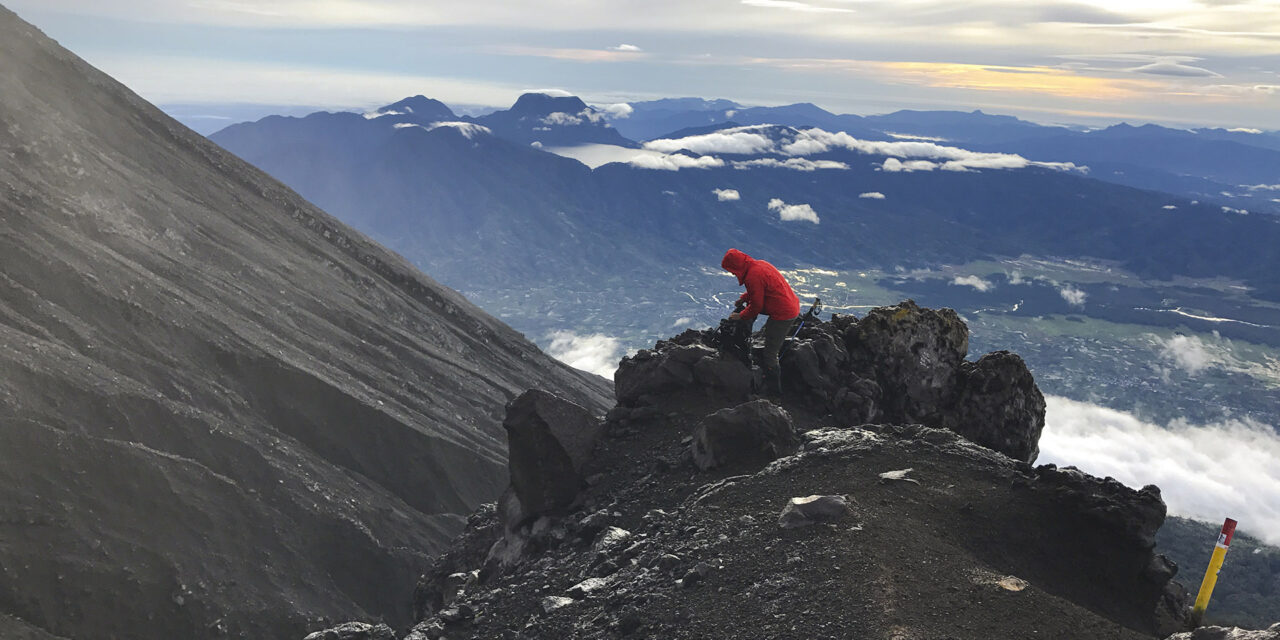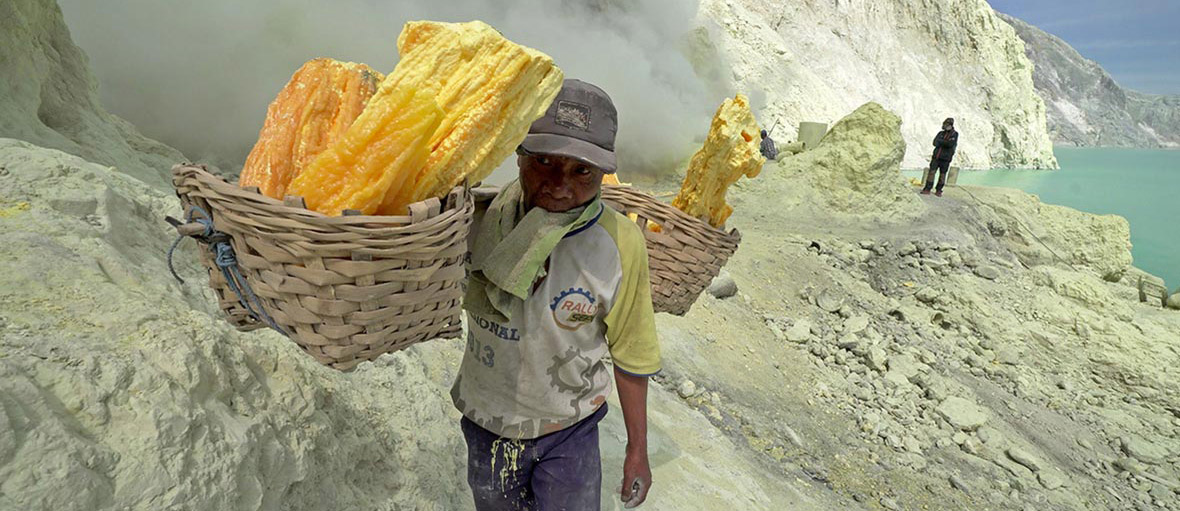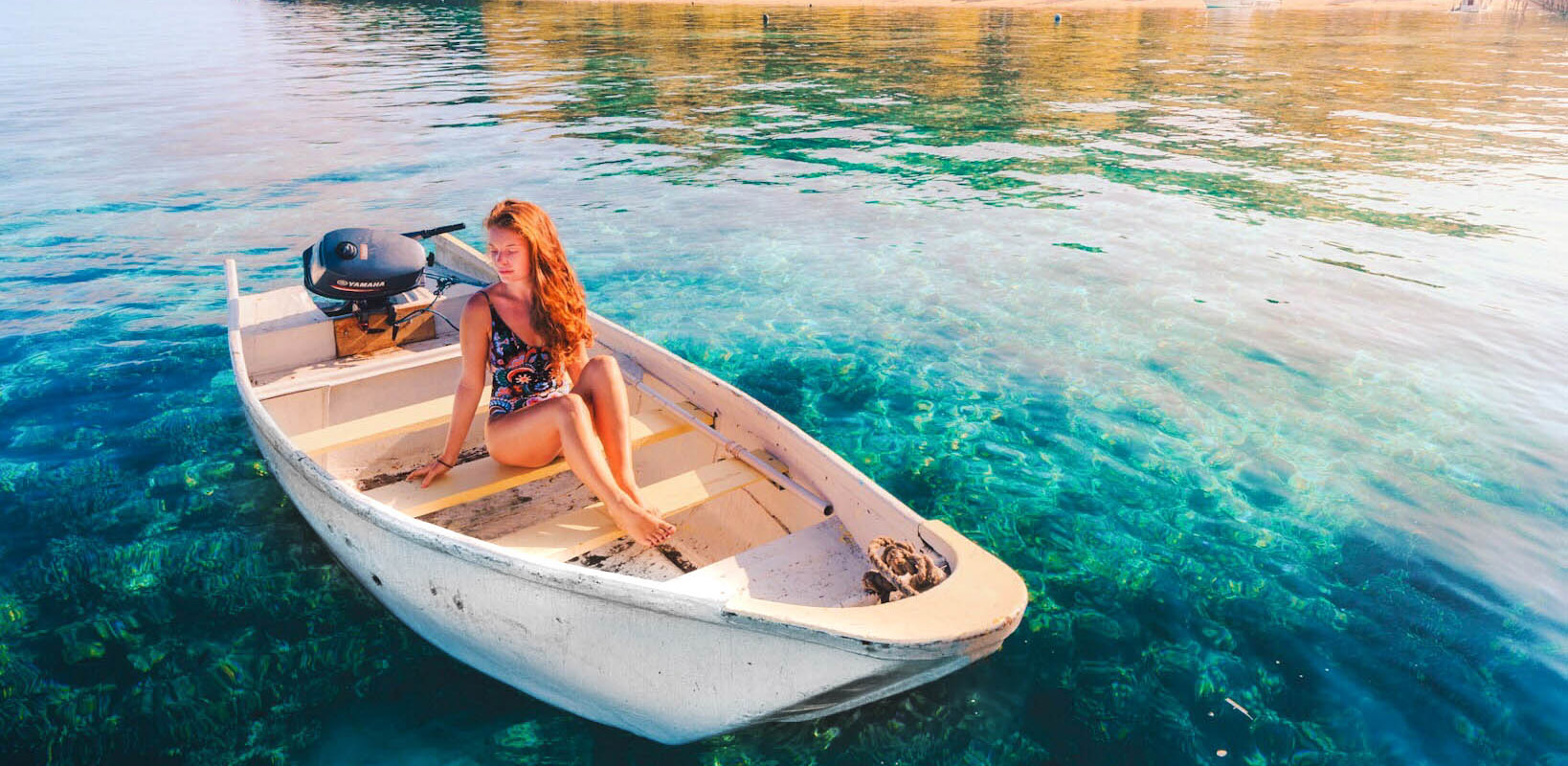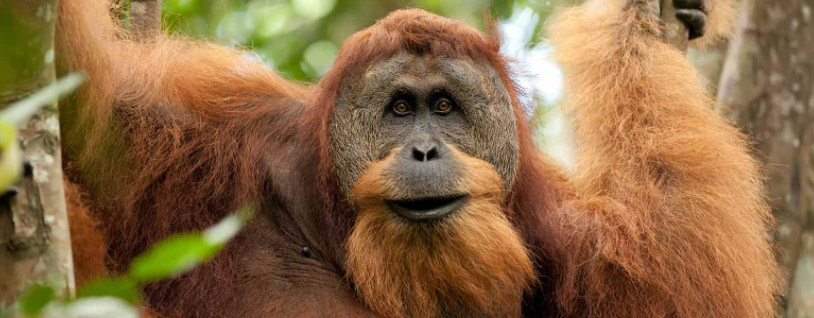For those who’ve conquered the volcanoes of Java at Ijen and Bromo, Mount Kerinci may be the Sumatran mountain you’ve been missing. With so many sites of interest in Indonesia, from Komodo dragons to some of the finest surfing destinations in the world, Sumatra is sometimes forgotten, but the switchback-less Kerinci is the tallest volcano in Southeast Asia and an excellent reminder that there’s much of western Indonesia that needs to be explored.
BEFORE THE VOLCANO
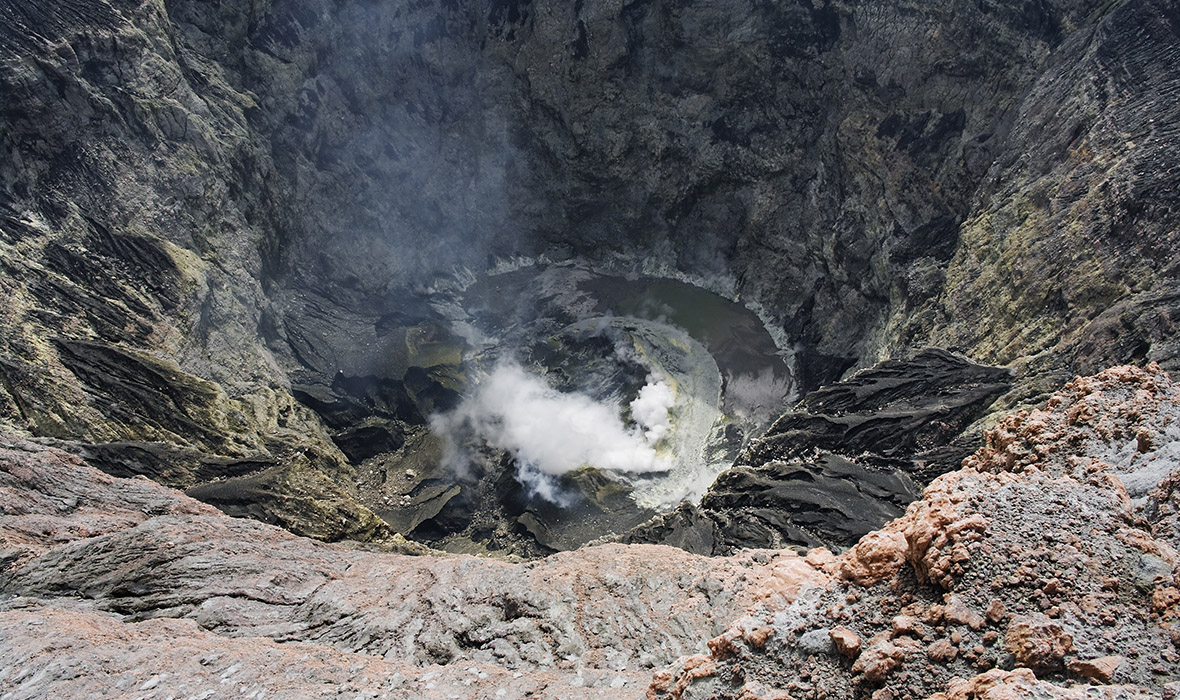
ABOVE: The smoldering Kerinci caldera.
Before heading straight to the mountain ridge climb, smart travelers will want to spend time exploring Kerinci Seblat National park. Indeed, one might argue the hikes there are just as rewarding.
There are the Ladeh Panjang rainforest wetlands and the Danau Gunung Tujuh Lake on the other side of Kerinci, but it’s the wildlife that draws most to this Sumatran paradise park.
It will be the tigers most want to spot. Unluckily, the chances of spotting one are slim – very slim. The national park here exists to actually protect tigers, so there aren’t tours chasing them down on the back of jeeps. Still, keep an eye out for footprints.
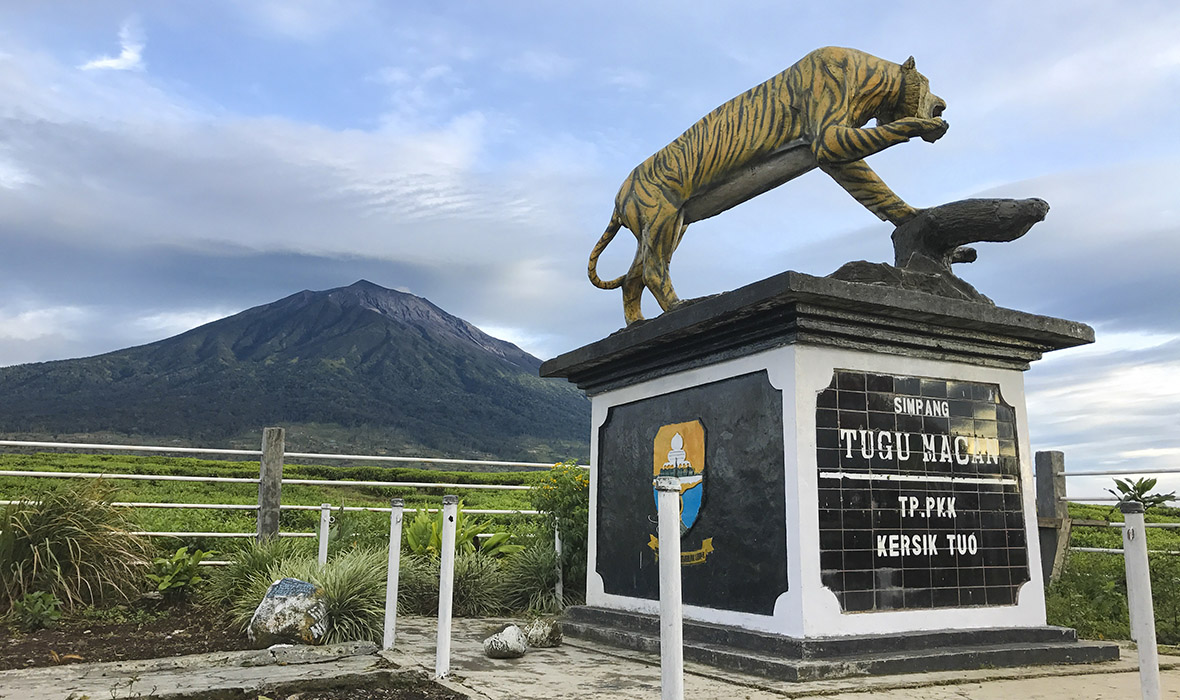
ABOVE: Though this is tiger country, chances of seeing one are almost zero.
Tigers aren’t the only big cats found in Kerinci National Park. There are wild elephants, sun bears, and leopards. Sadly, the famous Sumatran rhino has been declared extinct in this area. Still, there are orange leaf monkeys, gibbons, dhole, and deer.
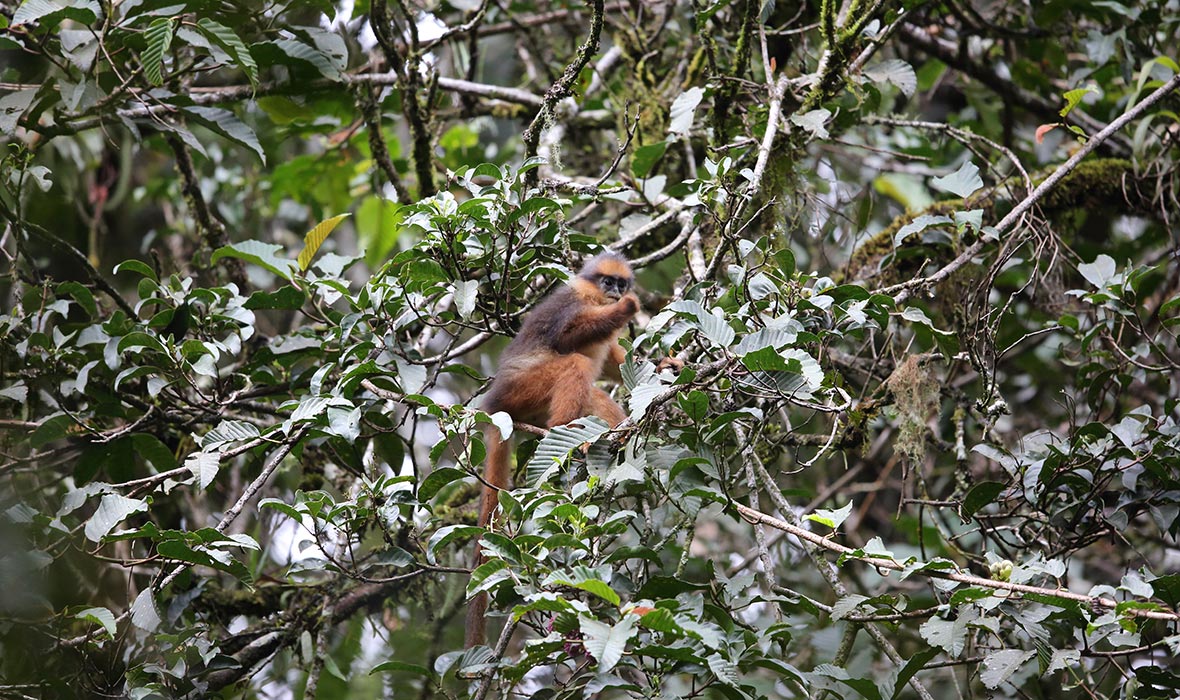
ABOVE: Orange leaf monkey near Kerinci.
From afar, Kerinci doesn’t look much different from other large volcanoes in Indonesia and elsewhere – perhaps even more tame because of the cultivated tea fields – but be advised that the Kerinci experience can get very jungle-y, very fast.
Apart from all of the interesting animals found in Kerinci Seblat National Park, there is also fun fauna, including the corpse flower – the largest flower in the world and which smells of rotting meat. Surprisingly hard to find, it flowers for only a few days.
The Hike
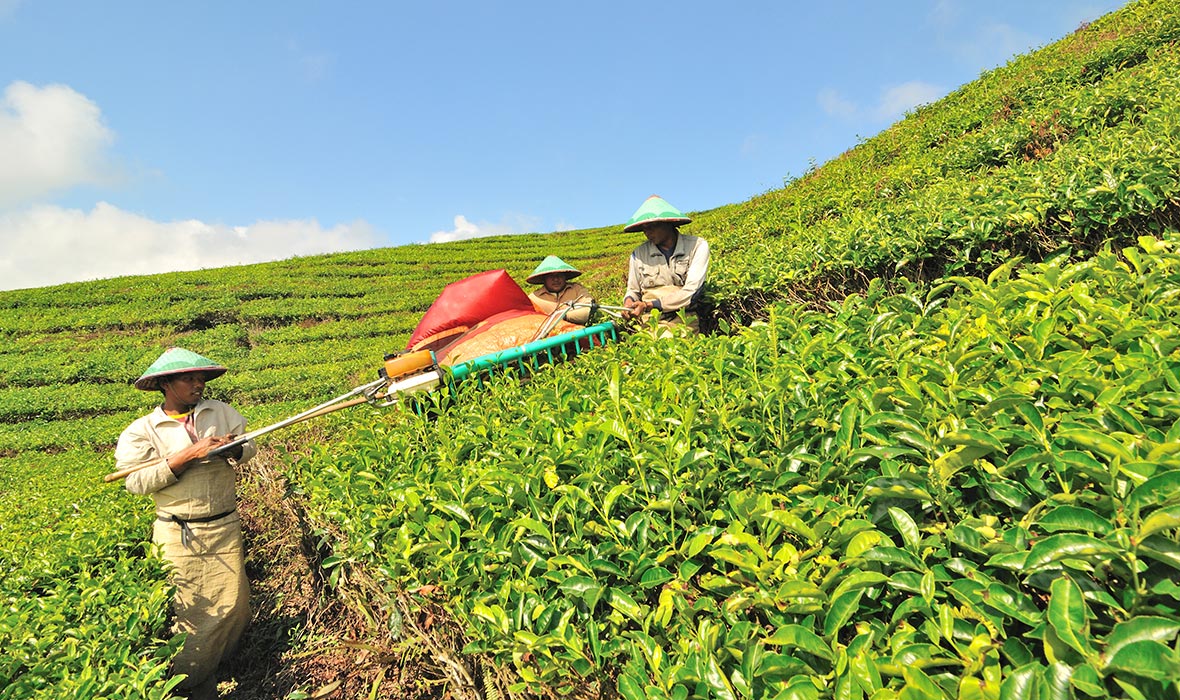
ABOVE: The tea fields leading to Kerinci, the second highest tea plantation in the world.
Getting into the hike up Kerinci itself, travelers will first come into contact with the tea fields. First built by the Dutch, the Kayu Aro Tea Plantation is the world’s second highest after Darjeeling. Tours are available from the employees at the tea factory, and Aroma Pecco park makes for an easy walk along shaded foot paths.
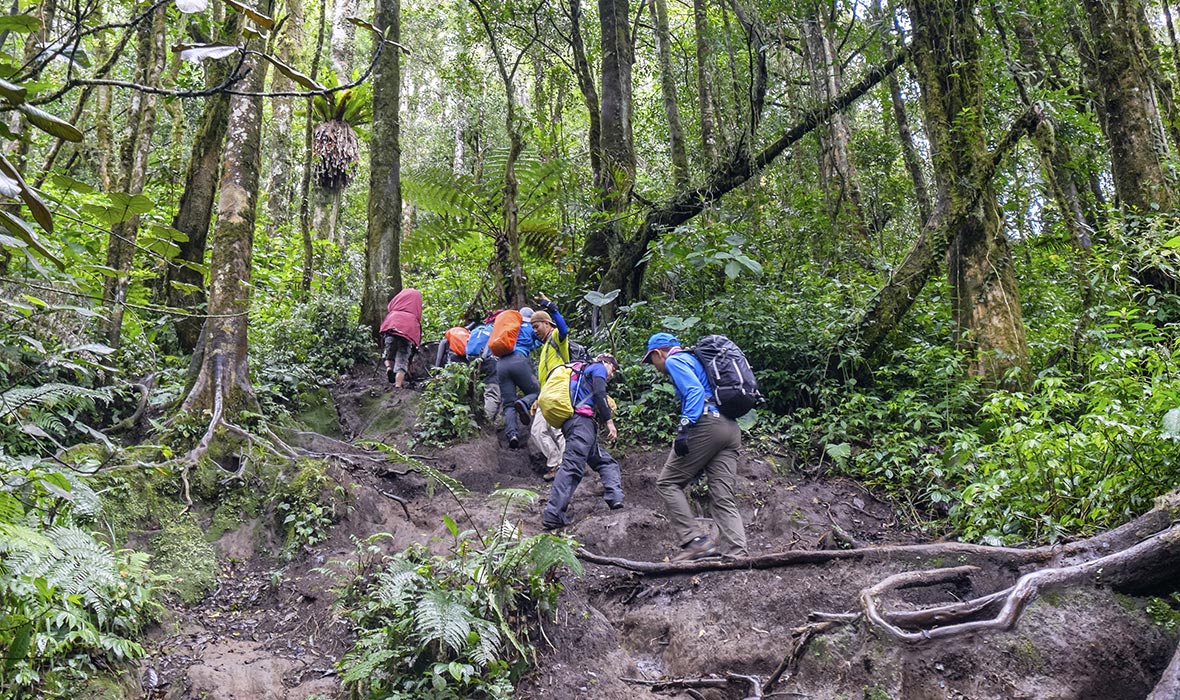
ABOVE: Jungle thicket leading up Kerinci.
The hike up Kerinci, however, is not easy. There are no switchbacks; it’s straight up, and it’s jungle. Leaving early in the morning, travelers can look forward to eight hours hiking – filled with singing jungle birds and the loud Siamang gibbons. Hikers will begin their adventure from the village of Kersik Tuo.
Along the way, there are camps at which groups can pitch a tent. For the most time for exploring the next day, it’s recommended to make up as much ground as possible on the first go.
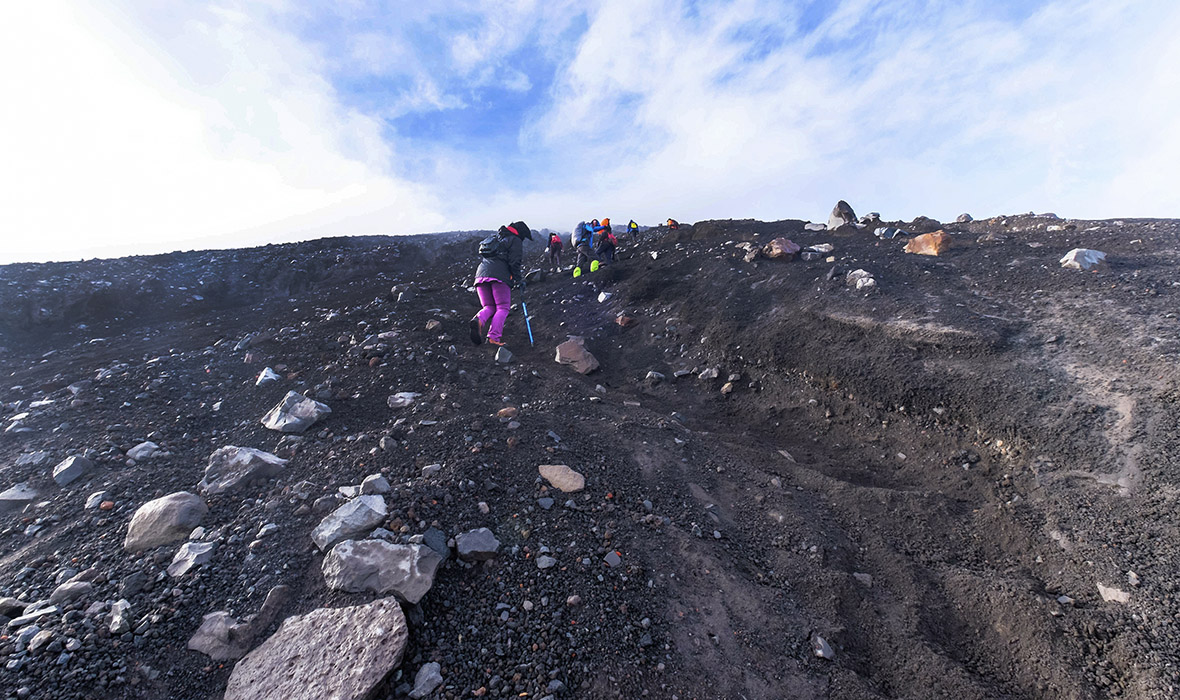
If you’ve managed to get high enough on the first day, it’s recommended to wake up very, very early in the morning – before first light – and head to the summit. The scree top is in stark contrast to the green, muddy rainforest one treks to get there.
As to gear, travelers are going to want to bring plenty of waterproof kit; the rainforest lives up to its name. And, hikers should remember to bring warm clothes, especially for their second day of hiking. Yes, you’re in Sumatra in Indonesia on the equator – and it’s about to get freezing cold. At 3,805 meters tall, Kerinci’s temperatures are often below freezing.
ABOVE: The summit is scree-covered.
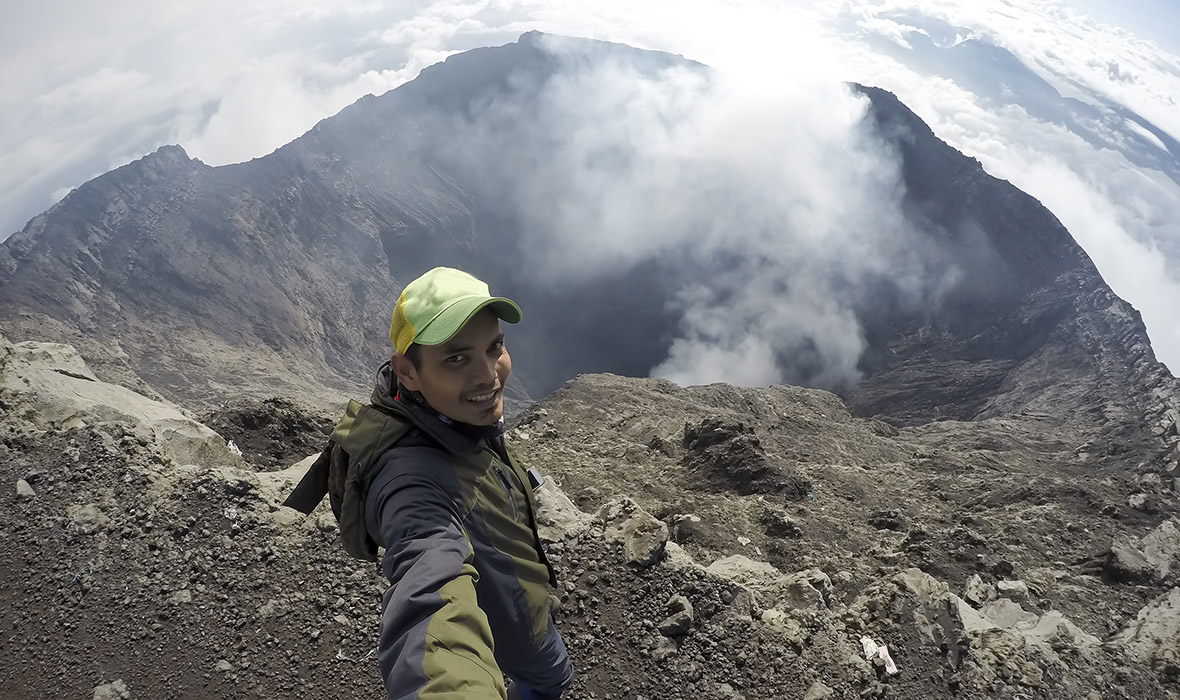
ABOVE: Climber taking a selfie atop Kerinci.
If the clouds aren’t blocking the view, hikers could be able to see down into the Kerinci’s crater still bubbling with lava and all the way to the sea in the west. The summit area is entirely scree. Kerinci is an active volcano, with eruptions once a year caused by the water below.
GOING DOWN
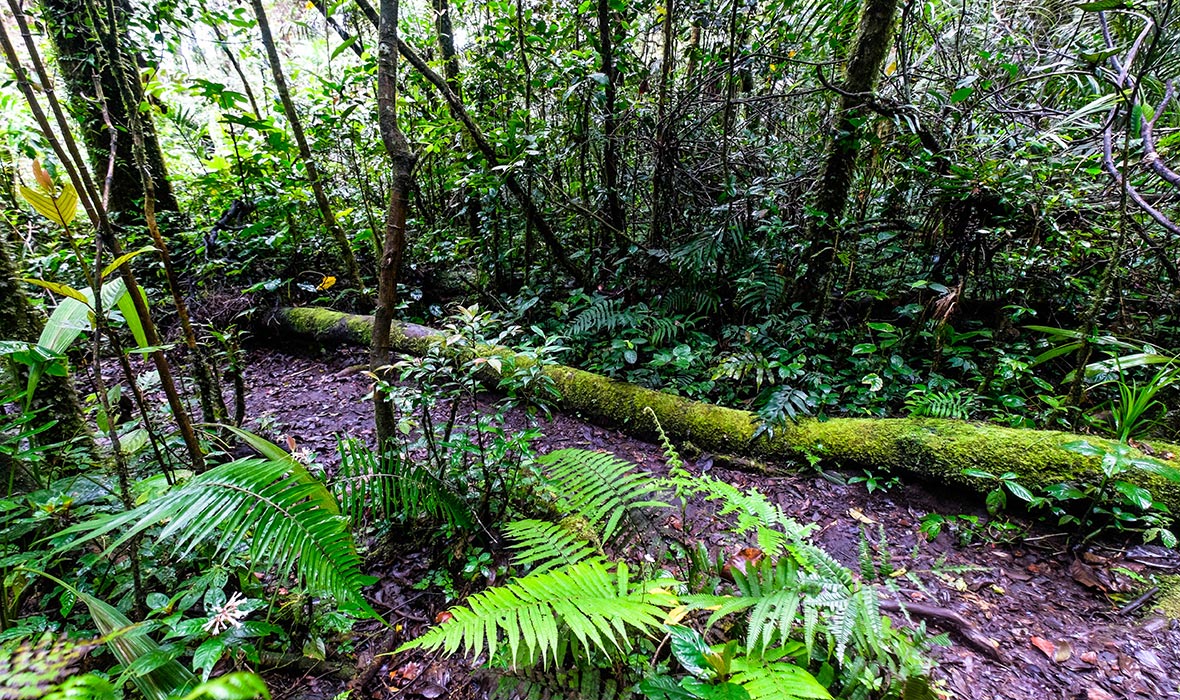
ABOVE: A slow, careful descent leaves time to discover the area’s diverse flora and fauna.
The hike down can be trying, so travelers not in a hurry should be advised to take their sweet time on the descent. The steep muddy areas can be especially difficult on the way down, and it is an opportunity to take a proper look at the wildlife in the area. The biodiversity in the region, especially of small fauna, is impressive considering it’s a rainforest by an active volcano.
Kerinci Seblat National Park is thousands of square miles of jungle, mountains, volcanoes, calderas, and lakes, and it’s tempting to step of Kerinci and set out to look for tigers. And, while travelers may not find any, this vestige of wildlife protection next to the second highest volcano in Southeast Asia exists to make sure the Sumatran tiger does not go the way of the Balinese and Javan.

